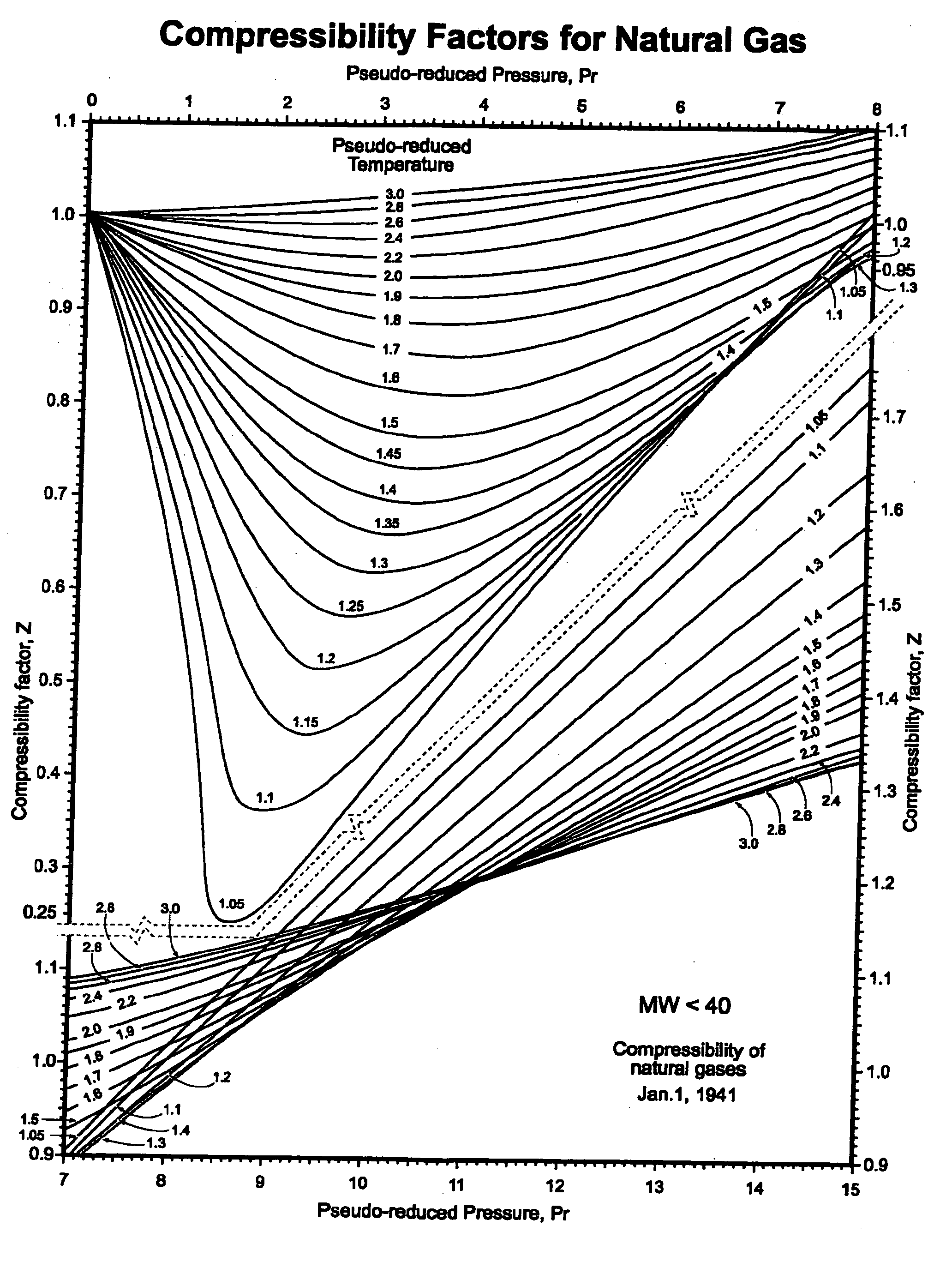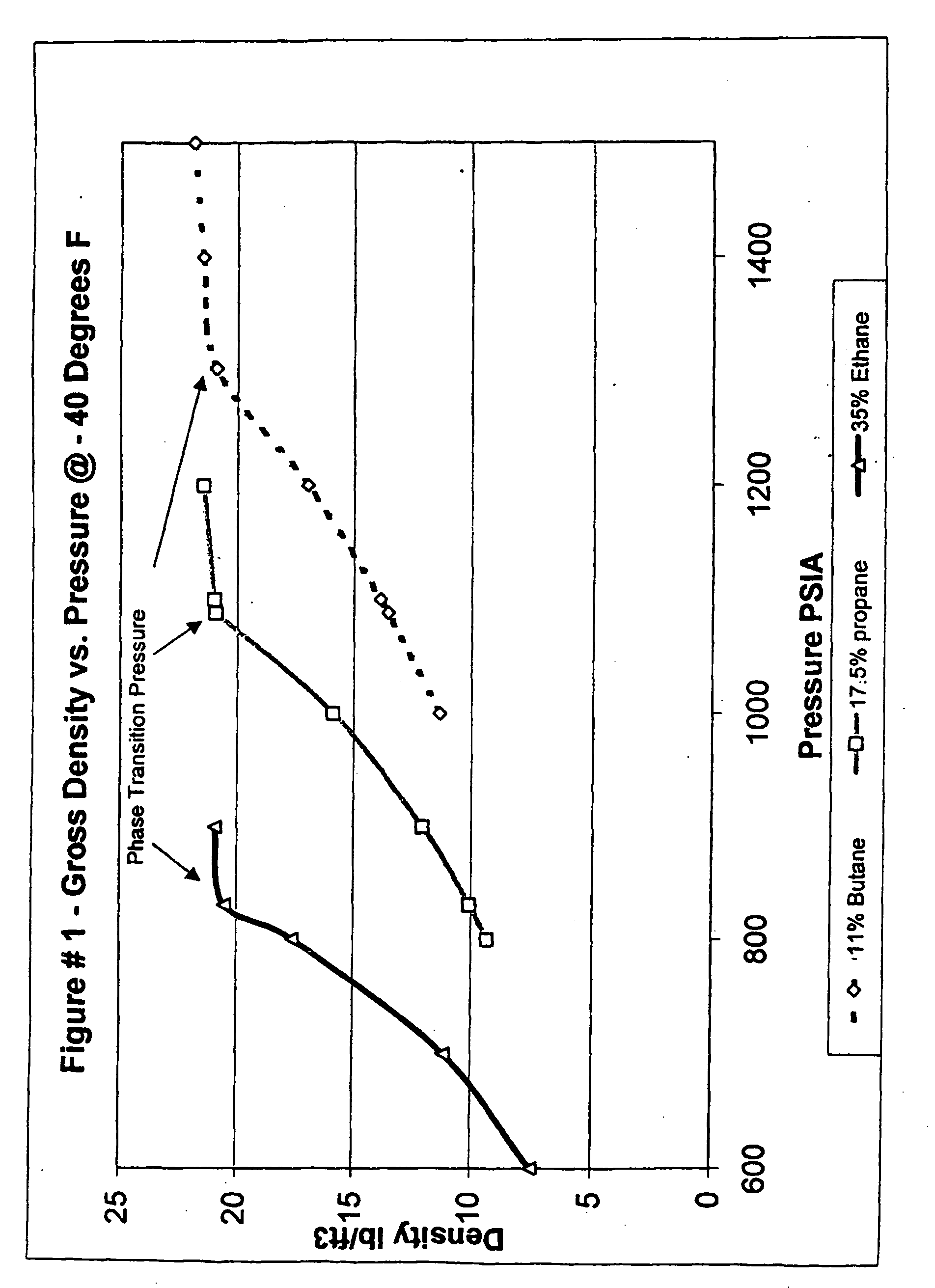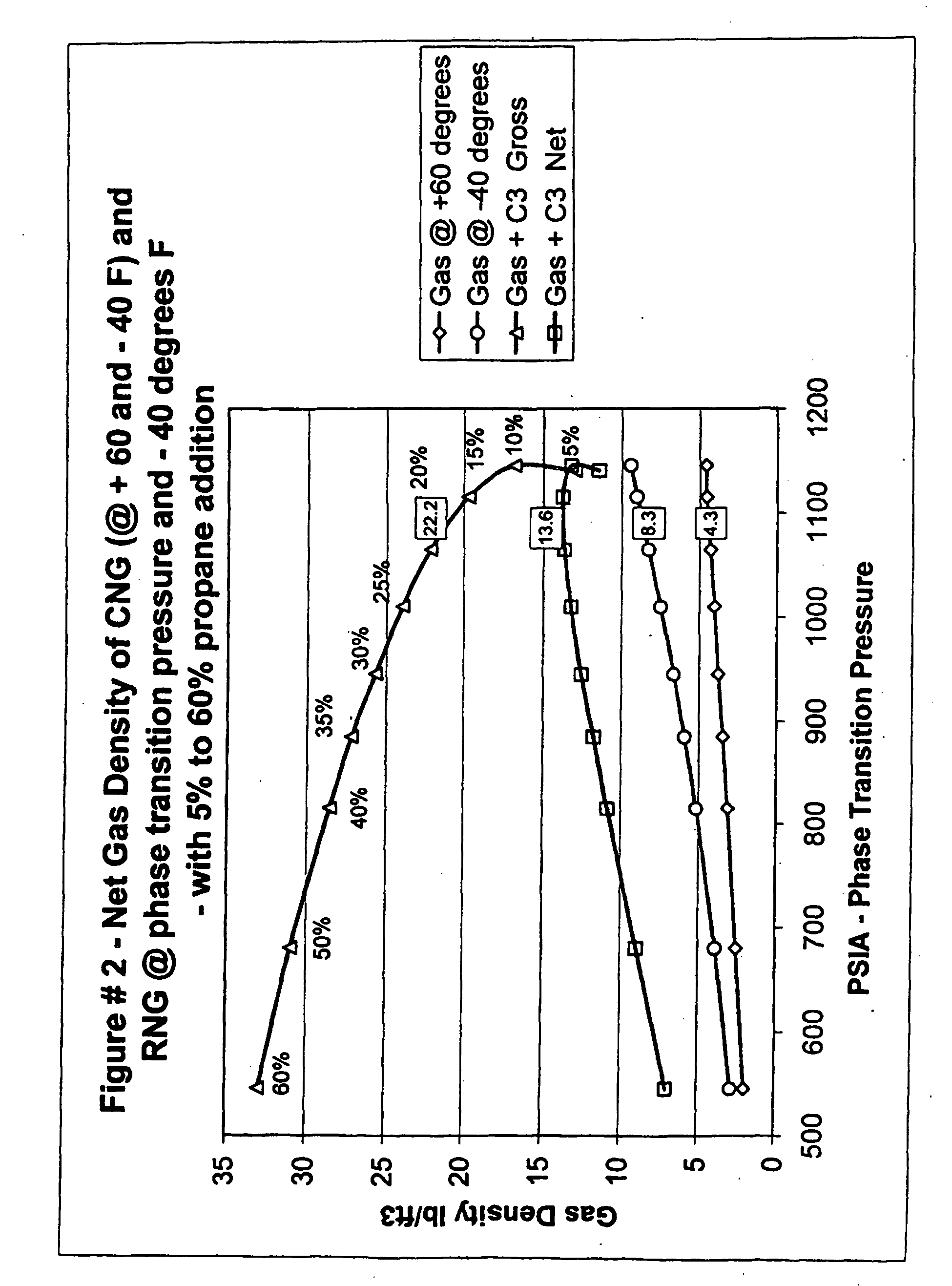Method and substance for refrigerated natural gas transport
a technology of refrigerated natural gas and transportation method, which is applied in the direction of gaseous fuels, container discharging methods, container filling under pressure, etc., can solve the problems of increasing the danger of liquid phase separation and refrigeration is not practical in pipeline applications, and achieves the effect of increasing density
- Summary
- Abstract
- Description
- Claims
- Application Information
AI Technical Summary
Benefits of technology
Problems solved by technology
Method used
Image
Examples
Embodiment Construction
[0064] Gas storage economics are improved by increasing the gas density of the natural gas and minimizing the pressure of the storage system. When one is trying to maximize the gas density at some minimum pressure, one way that this is achieved is by minimizing the compressibility factor z.
[0065] When the compressibility factor z is read from the attached textbook FIG. 23-3 at FIG. 13, two factors become apparent. The first is that the minimum z factor occurs with a gas that has a pseudo reduced temperature close to 1. This means that the actual gas temperature should be close to the pseudo critical temperature of the mixture. The second is that, if one can economically achieve a pseudo reduced temperature of about 1.2 and a resulting z factor of about 0.5 through low cost refrigeration alone, changing the gas composition by adding NGL to reduce the pseudo reduced temperature to close to 1 can reduce the z factor to about 0.25.
[0066] Thus, a 16% reduction in the pseudo reduced tem...
PUM
| Property | Measurement | Unit |
|---|---|---|
| pressure | aaaaa | aaaaa |
| diameter | aaaaa | aaaaa |
| diameter | aaaaa | aaaaa |
Abstract
Description
Claims
Application Information
 Login to View More
Login to View More - R&D
- Intellectual Property
- Life Sciences
- Materials
- Tech Scout
- Unparalleled Data Quality
- Higher Quality Content
- 60% Fewer Hallucinations
Browse by: Latest US Patents, China's latest patents, Technical Efficacy Thesaurus, Application Domain, Technology Topic, Popular Technical Reports.
© 2025 PatSnap. All rights reserved.Legal|Privacy policy|Modern Slavery Act Transparency Statement|Sitemap|About US| Contact US: help@patsnap.com



